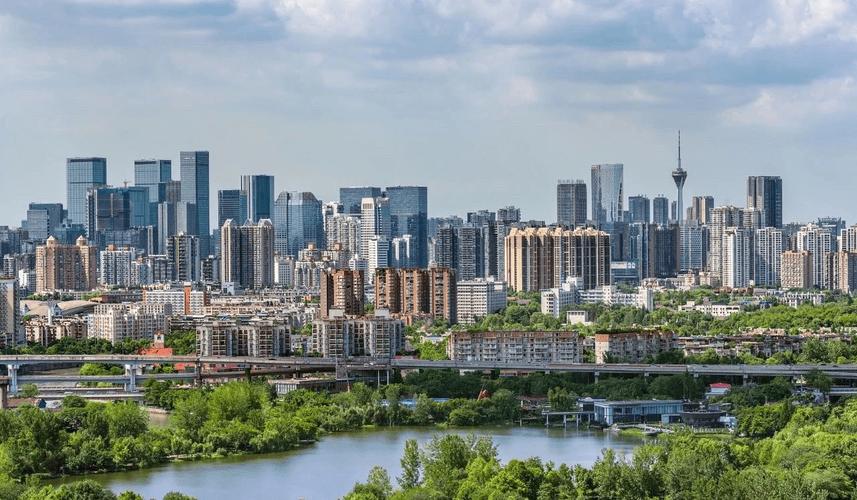Nestled in the heart of Sichuan Province, Chengdu is a city that effortlessly marries millennia of history with cutting-edge innovation. Known as the “Land of Abundance” (天府之国), it captivates visitors with its laid-back charm, vibrant culture, and world-renowned cuisine. Let’s delve into what makes this city a must-visit destination.
A Glimpse into History
Chengdu’s roots stretch back over 4,500 years, serving as the cradle of ancient Shu civilization. By 316 BCE, it became the capital of the Shu Kingdom and later flourished under the Qin Dynasty, which constructed the Dujiangyan Irrigation System—a UNESCO World Heritage Site that transformed the region into a fertile agricultural hub. The city’s 2,300-year-old urban layout, preserved through dynasties and modernization, stands as a testament to its enduring legacy.
Key historical landmarks include:
- Wuhou Shrine: A tribute to Zhuge Liang, the legendary strategist of the Three Kingdoms period.
- Jinli Ancient Street: A bustling alleyway lined with traditional teahouses and Sichuanese architecture, offering a window into Chengdu’s past.
- Sanxingdui Ruins: A Bronze Age archaeological site revealing mysterious artifacts of the Shu culture.
Modern Urban Vibrancy
Today, Chengdu is a thriving metropolis and a hub for technology, finance, and transportation in southwestern China. The city’s skyline blends futuristic landmarks like Taikoo Li—a luxury shopping complex juxtaposed with historic temples—and Chunxi Road, a bustling commercial artery. Chengdu’s tech industry, dubbed the “Silicon Valley of the West,” hosts global giants and startups alike, driving its reputation as a forward-thinking city.
Must-Visit Attractions
- Chengdu Research Base of Giant Panda Breeding
No trip is complete without meeting China’s national treasure. This conservation center allows visitors to observe pandas munching bamboo or tumbling playfully. - Mount Qingcheng and Dujiangyan
A Taoist sacred site and the ancient irrigation system, both UNESCO-listed, showcase Chengdu’s harmony with nature. - Kuanzhai Alley (宽窄巷子)
This historic district, with its Qing Dynasty courtyards and trendy cafes, epitomizes Chengdu’s blend of old and new. - Sichuan Opera
Don’t miss the mesmerizing Bianlian (face-changing) performance, a dazzling display of traditional artistry.
A Culinary Paradise
Chengdu is synonymous with Sichuan cuisine, a fiery yet flavorful symphony of spices. Must-try dishes include:
- Hot Pot: Dive into a communal pot of bubbling broth, cooking everything from tender meats to leafy greens.
- Mapo Tofu: Silken tofu in a spicy bean sauce, crowned with Sichuan peppercorns for that signature mala (numbing-spicy) kick.
- Dan Dan Noodles: Wheat noodles tossed in chili oil, minced pork, and peanuts—a street food classic.
- Chuan Chuan Xiang (Skewers): DIY skewers dipped in spicy broth, perfect for a quick, flavorful bite.
For sweets, indulge in Glutinous Rice Balls (赖汤圆) or Sugar-Coated Haws (糖葫芦), a nostalgic treat.
The Chengdu Lifestyle
Chengdu’s soul lies in its leisurely pace. Locals sip tea in century-old teahouses like Heming Teahouse, play mahjong in parks, or stroll through People’s Park—a green oasis where laughter and chatter fill the air. At night, Jiuyanqiao (Nine-Eye Bridge) comes alive with neon-lit bars and live music, embodying the city’s dual identity.
Conclusion
Chengdu is more than a destination; it’s an experience. From pandas to peppercorns, ancient temples to avant-garde tech hubs, this city invites you to savor its contrasts. As a local saying goes: “Once you come to Chengdu, you’ll never want to leave.” 🌶️🐼
References:
: Introduction to Chengdu’s cuisine and pandas.
: Historical sites and Sichuan cuisine.
: Cultural landmarks and modern tech industry.
: Leisure culture and tourism highlights.
: Blend of tradition and modernity.
: Ancient Shu civilization origins.
: Dujiangyan’s historical significance.
: Urban development through dynasties.
: Tourist attractions and local lifestyle.
: Nightlife and urban exploration.
: Sichuan opera and street food.
: Iconic Chengdu dishes.
: Culinary diversity and recommendations.
